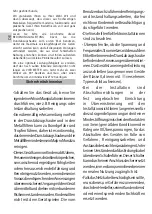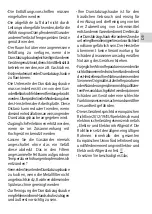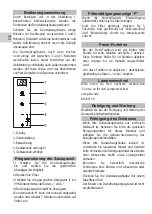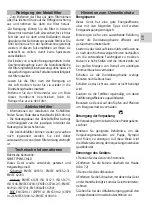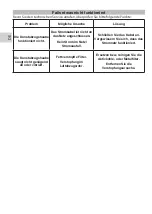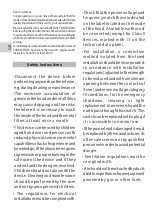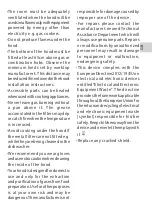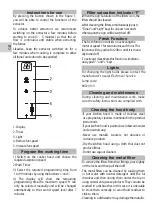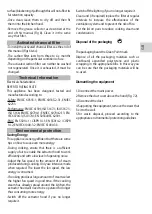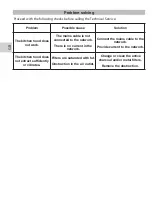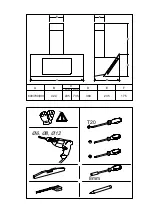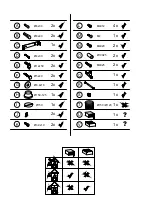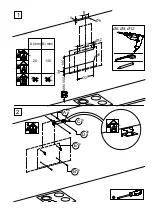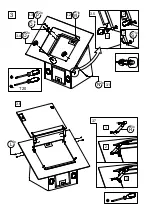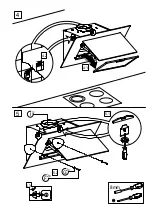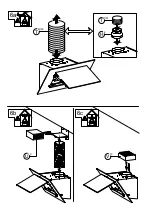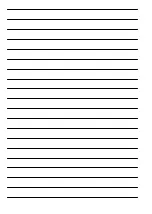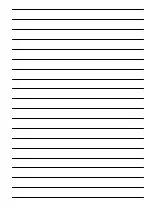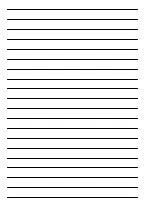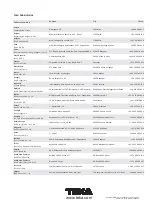
GB
surface (blackening it), although this will not affect its
fat retention capacity.
•Once clean, leave them to dry off and then fit
them onto the kitchen hood.
•
Remove the grease collector as described at the
end of this manual (Fig 8). Clean it in the same
way that filter.
Activated charcoal filter
• To install the activated charcoal filter, see the end of
this manual (Figs 6b-6c).
• The carbon filter lasts from three to six months
depending on the particular conditions of use.
• The activated carbon filter can neither be washed
nor regenerated. Once it is exhausted, it must be
changed.
Technical Information
Electrical characteristics:
REFER TO RATING PLATE
This appliance has been designed, tested and
manufactured according to:
• Safety: EN/IEC 60335-1; EN/IEC 60335-2-31, EN/IEC
62233.
• Performance: EN/IEC 61591; ISO 5167-1; ISO 5167-3;
ISO 5168; EN/IEC 60704-1; EN/IEC 60704-2-13; EN/
IEC 60704-3; ISO 3741; EN 50564/IEC 62301.
• EMC: EN 55014-1 / CISPR 14-1; EN 55014-2 / CISPR
14-2; EN/IEC 61000-3-2; EN/IEC 61000-3-3.
Environmental protection
Saving Energy
This appliance is energy-efficient but there are some
tips on how to save even more energy:
• During cooking, ensure that there is a sufficient
supply of air to enable the extractor hood to work
efficiently and with a low level of operating noise.
• Adjust the fan speed to the amount of of steam
produced during cooking. Only use intensive mode
when required. The lower the fan speed, the less
energy is consumed.
• If cooking produces large amounts of steam, select
the higher fan speed in good time. If the cooking
steam has already spread around the kitchen, the
extractor hood will need to be operated for longer
thus consuming more energy.
• Switch off the extractor hood if you no longer
require it.
• Switch off the lighting if you no longer require it.
• Clean and (if required) replace the filter at regular
intervals to increase the effectiveness of the
ventilation system and to prevent the risk of fire.
• Put the lid on pans to reduce cooking steam and
condensation.
Disposal of the packaging
The packaging bears the Green Point mark.
Dispose of all the packaging materials such as
cardboard, expanded polystyrene and plastic
wrapping in the appropriate bins. In this way you
can be sure that the packaging materials will be
re-used.
Dismantling the equipment:
1. Disconnect the mains power.
2. Remove the duct cover above the hood (Fig. 7.2).
3. Disconnect the duct.
4. Supporting the equipment, remove the srews that
fix it to the wall.
5. For waste disposal, proceed according to the
appropriate environmental protection guidelines.
Summary of Contents for DVT TBS Series
Page 1: ...DVT TBS SERIES Bedienungsanleitung DE Instruction Manual GB ...
Page 7: ...DE ...
Page 13: ...GB ...
Page 14: ...175 A B C D E F 424 435 380 235 MIN MAX 735 600 700 900 8mm Ø6 Ø8 Ø12 T20 A E F B D C ...
Page 16: ...2 1 A 2x B 2x Ø6 MIN 550 320 98 B Ø8 1x C E 2x D 2x 320 Ø12 Ø6 Ø8 Ø12 190 A A mm B mm 20 130 ...
Page 17: ...3 5 1 2 3 1x S 2x N 3 1 1x M 3 2 2x P 3 3 2x O 3 4 3 T20 3 6 L 4x 3 7 2 3 1x R 1x Q 1 ...
Page 18: ...4 4 1 4 2 5 3 5 5 1 I 1X 2x G 5 2 2x F 8mm ...
Page 19: ...6a T Ø120 H 1x T Ø150 6b 6c U 1X V 1X ...
Page 20: ...8 7 K J 7 2 2x 6x 7 1 8 1 8 2 ...
Page 21: ......
Page 22: ......
Page 23: ......


